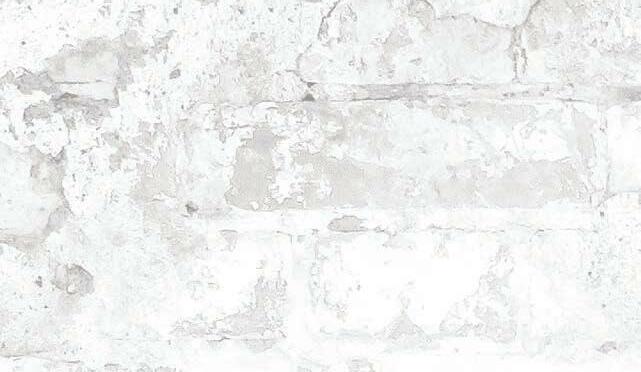
6 minute read
Khat: Meet the Plant Gunning for Marijuana's
KHAT:
MEET THE PLANT GUNNING FOR MARIJUANA’S SPOT
BY JEAN-GABRIEL FERNANDEZ
Photo by HomoCosmicos/Getty Images.

There is one plant that rivals marijuana in terms of popularity among black-market transactions: khat.
So far in 2022, the plant has been seized by the United States’ Customs and Border Protection, at greater rates than marijuana. Just last year, khat was significantly less commonly smuggled into the U.S. than marijuana, and every year before that it was less important for illicit organizations. But as marijuana becomes increasingly legal in the U.S., shrinking the profits of trafficking it, khat has imposed itself as another plant-based alternative.
In a single drug bust, U.S. Coast Guard and Customs and Border Protection seized more than 20,000 pounds of khat in Seattle on Sunday, July 24, 2022. That single shipment contains as much as 10% of all the khat seized in the entire country in all of 2021. The role of khat in the American drug circles has been skyrocketing in the last couple years. It is therefore important to learn about it, like Americans 100 years ago had to learn about the scary new drug flooding its streets, marijuana.
WHAT IS KHAT?
Khat is an evergreen shrub native to Africa and the Middle East. It has a long history of use by local populations, where chewing khat is a longstanding custom, similar to the use of coca leaves in South America. The khat plant is easy to cultivate; it grows in arid environments, requires little water and can be harvested several times a year for its leaves, which contain its psychoactive elements, cathine and cathinone.
Cathinone has effects comparable to (but much weaker than) amphetamines and cocaine. It is a powerful stimulant that can trigger feelings of euphoria, confidence and motivation. It is consumed in social settings similar to coffee and alcohol in the Western world. It removes inhibitions, eases socialization, increases energy and talkativeness.
Khat leaves are usually dried and chewed for their stimulant effect. More rarely, they can be sprinkled in food or infused in tea, or even smoked. The traditional chewing method is considered to be the safest method of consumption. Khat, like marijuana, appears to have a very low risk of addiction. It is impossible to assert that khat causes no physical dependence at all, like marijuana, as there is virtually no formal research on the plant, but users and experts agree that khat addiction is only or almost only psychological.
Withdrawal symptoms, even among longtime daily users, are minor inconveniences. Overdoses on khat are rare and usually not deadly, they include difficulty breathing, higher blood pressure and delusions. The biggest risk of khat use is a possible degradation of the oral mucus and teeth, as well as liver damage, more uncommonly. In that way, khat is not dissimilar to nicotine and alcohol.
WHAT IS KHAT’S LEGAL STATUS?
In the United States, the khat plant itself is technically legal, but the chemical components within khat are banned substances. Cathinone is the one that the U.S. government is concerned about, as it is a Schedule I controlled substance— that is the highest classification of drugs,

Photo by mtcurado/Getty Images.
where you find heroin and, hilariously, marijuana. It means that cathinone has a high potential for abuse and no medical use, according to the Drug Enforcement Administration (DEA). As usual, the DEA is entirely off the mark, as khat has a very low potential for addiction.
The legality of khat, and the harshness of punishment for possession, can vary wildly between states. In Wisconsin, there has been at least one case. Liban Moalin, an Ethiopian native, was arrested and sentenced to one year in prison and one year of extended supervision, with the threat of deportation awaiting him at the end of his punishment. Eight years later, the same man was arrested on the same charges in Richmond, Canada. In Wisconsin, at the time of Moalin’s sentencing, then-Assistant District Attorney Kenneth Farmer revealed that the offense could carry a sentence of up to six years in prison and a $10,000 fine.
That is not to say that khat is illegal everywhere. The World Health Organization (WHO) considers khat to not be enough of a problem to include it in the Single Convention on Narcotic Drugs. The WHO determined that khat is less addictive than tobacco or alcohol and far less dangerous for the health of users.
It comes as no surprise that the plant is legal in many of the countries where it originated: Khat is legal in Ethiopia, Somalia, Kenya, Uganda and also in other nations, particularly in South America. It used to be legal throughout much of Europe, but it was largely banned in the 2000s and 2010s. In Canada, khat is also technically illegal, but Canadian courts have consistently ruled in favor of khat by refusing to dole out punishment to khat users because, the courts say, there is no evidence that khat is harmful.
Yemen is one country with a unique relationship to khat, as well as the source of much of the khat being smuggled through U.S. borders today. Because the cultivation of khat is very profitable to Yemeni farmers, the plant represents a vastly oversized slice of agriculture there. According to Ghassan Madieh, a UNICEF water specialist in Sana’a, roughly 40% of all the water supply of Yemen goes exclusively to the cultivation of khat. It is the country’s biggest cash crop.
THE PLACE OF KHAT IN THE U.S.
Historically, Americans’ drug of choice was alcohol. Then came Mexican immigrants in the early 1900s, who brought with them the habit of smoking the cannabis plant. Marijuana then became America’s other favorite drug. Alcohol was temporarily banned, but when Prohibition ended, Prohibition enforcers needed a new banned substance to keep themselves in power. Marijuana was it.
When criminal organizations determined how to best milk Americans for all they’re worth, marijuana was the obvious choice. Easy to create, as it is literally a plant that grows on its own, easy to harvest and package for wealthy Americans, easy to sell and profit from. Marijuana doesn’t kill longtime customers, yet it is illegal, which curtails all competition and guarantees that criminal enterprises can set the price and reap obscene profits. Starting in 2012, however, U.S. states started to push back against the illogical prohibition of marijuana. In just one decade, most states legalized some form of marijuana, and nearly half legalized recreational marijuana. As a direct consequence, profits from illegal marijuana trafficking plummeted. Even the DEA admitted it after years of compounded data that made it impossible to deny: Marijuana legalization successfully undermines drug trafficking.
In need of new revenue, these criminal organizations have developed other activities, such as trafficking fentanyl and khat. They are taking advantage of khat’s jarring similarities with marijuana: It is a plant, cheap and easy to grow and harvest, it is harmless and under-the-radar while being sought after by a large community of enthusiasts. It is also a Schedule I drug for no good discernible reason.
It seems that, until the U.S. gives khat the marijuana treatment and legalizes it through slow grassroots efforts, khat will be a reliable source of income for criminal organizations. Do we really need to go through the same song and dance number again to legalize yet another harmless substance? Only the future votes of Americans can decide that.
Jean-Gabriel Fernandez is a Milwaukee journalist with a Ph.D. from the Sorbonne, France’s top university.











